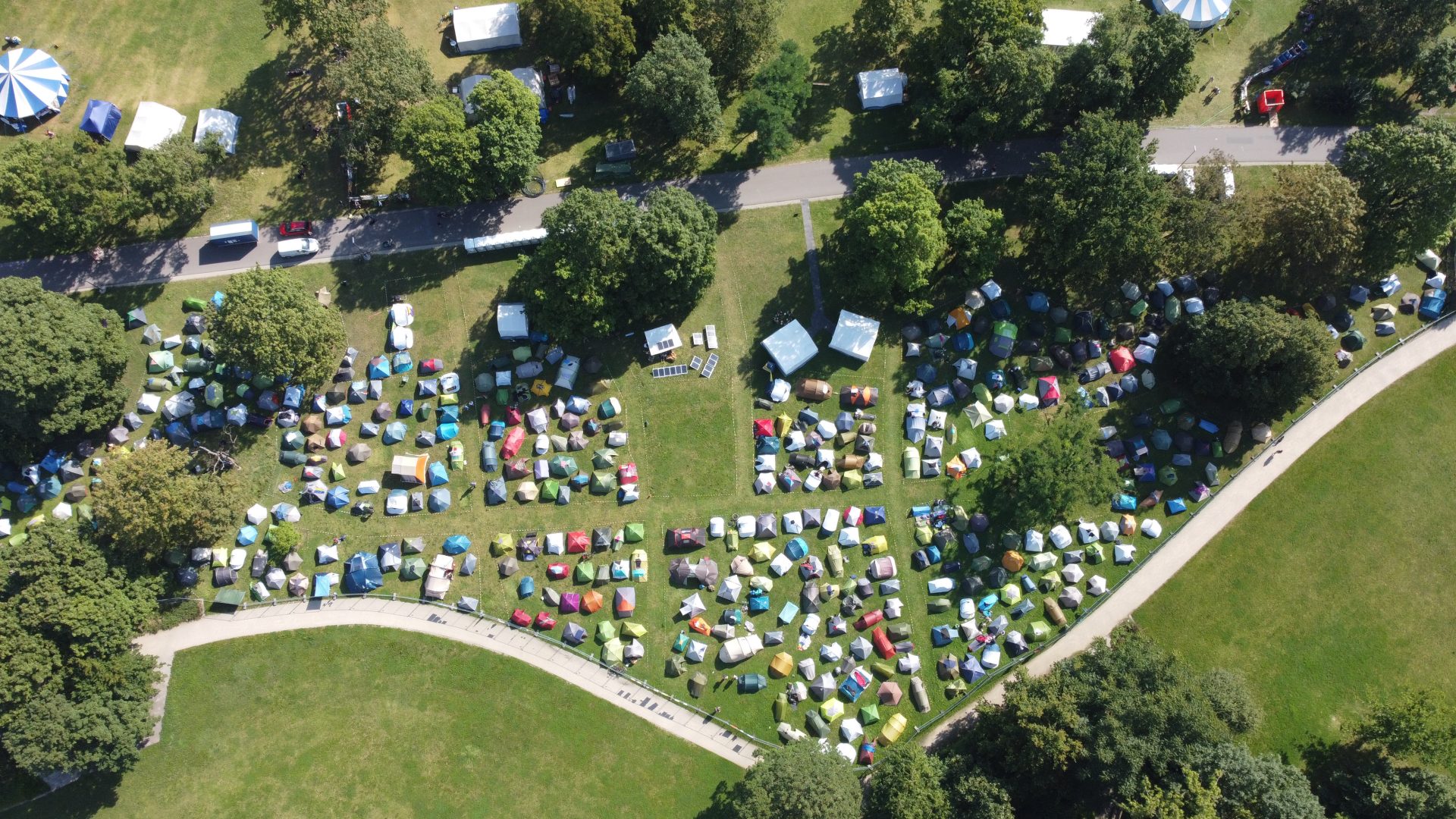Please show consideration for each other when using the toilets and washing facilities!
Disinfect your hands as often as you can. Also remember to wash your hands with soap, especially before eating and after using the toilet. This is all about hygiene – a grassy meadow outside is always much dirtier than a house with tiles. 🙂
Water
There will be several places on the camp where fresh water will be available. We cannot guarantee that this fresh water will be drinking water, so bear that in mind.
We are of course doing everything possible to ensure that not only the people who drink from each well are on the safe side, but also those who do not have the best immune system.
To do this, we commission a water test to examine the safety of the drinking water. The results take a few days, so we can’t make any statements at the start of the camp.
Generally, the water comes from the city’s fresh water supply and is transported to the washing stations through our own pipes. The pipes are suitable for transporting drinking water. Samples are only taken at 1-3 points, but the rest of the pipeline system meets the same standards. The pipes are the same pipes that have usually been used in the past to achieve drinking water-compliant values. However, contamination can always occur during assembly, dismantling and storage, so we cannot guarantee anything.
For people who want to be on the safe side, there will be a boiler at the Küfa where boiled water is available.
We cannot guarantee that this fresh water is drinking water, so bear that in mind.
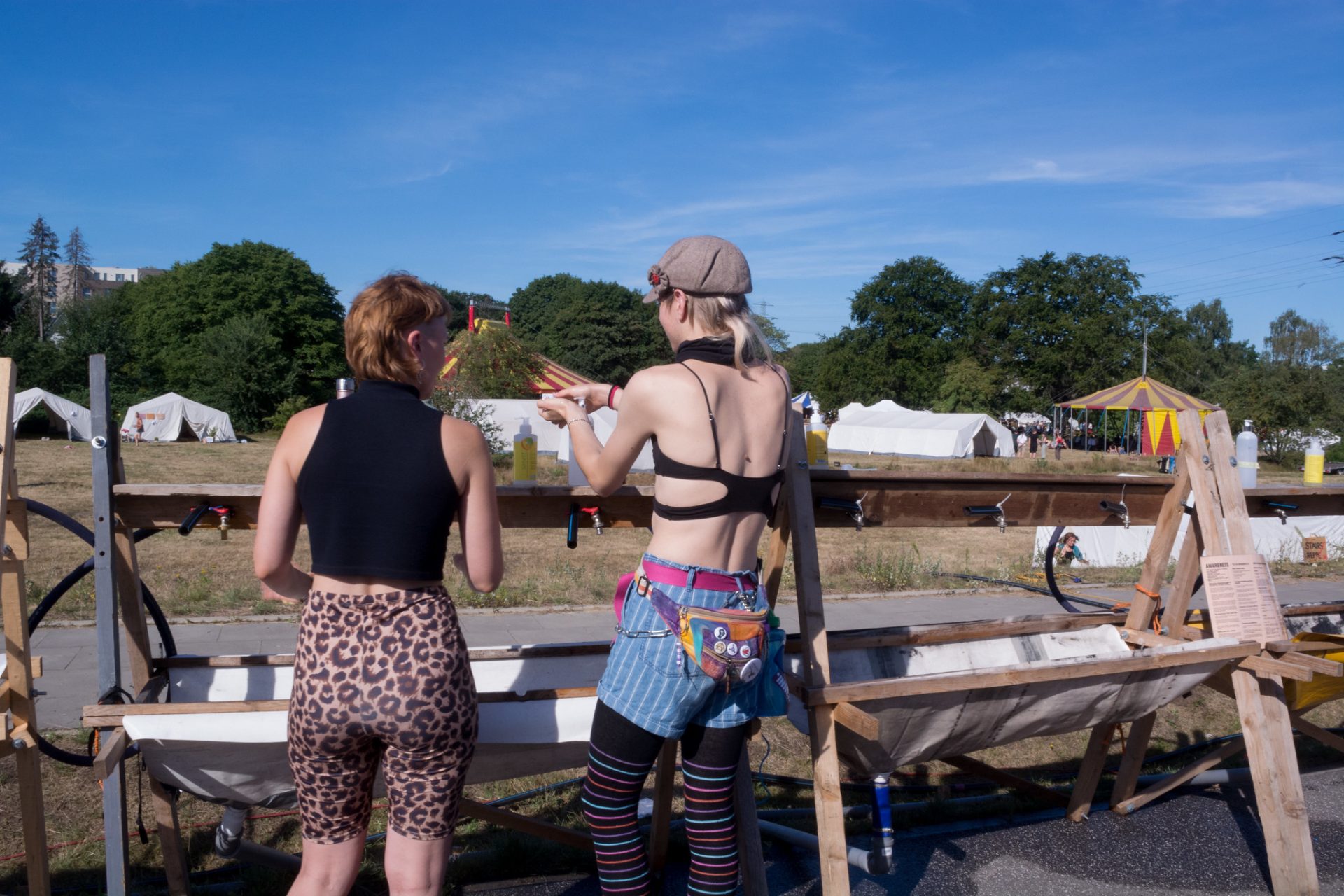
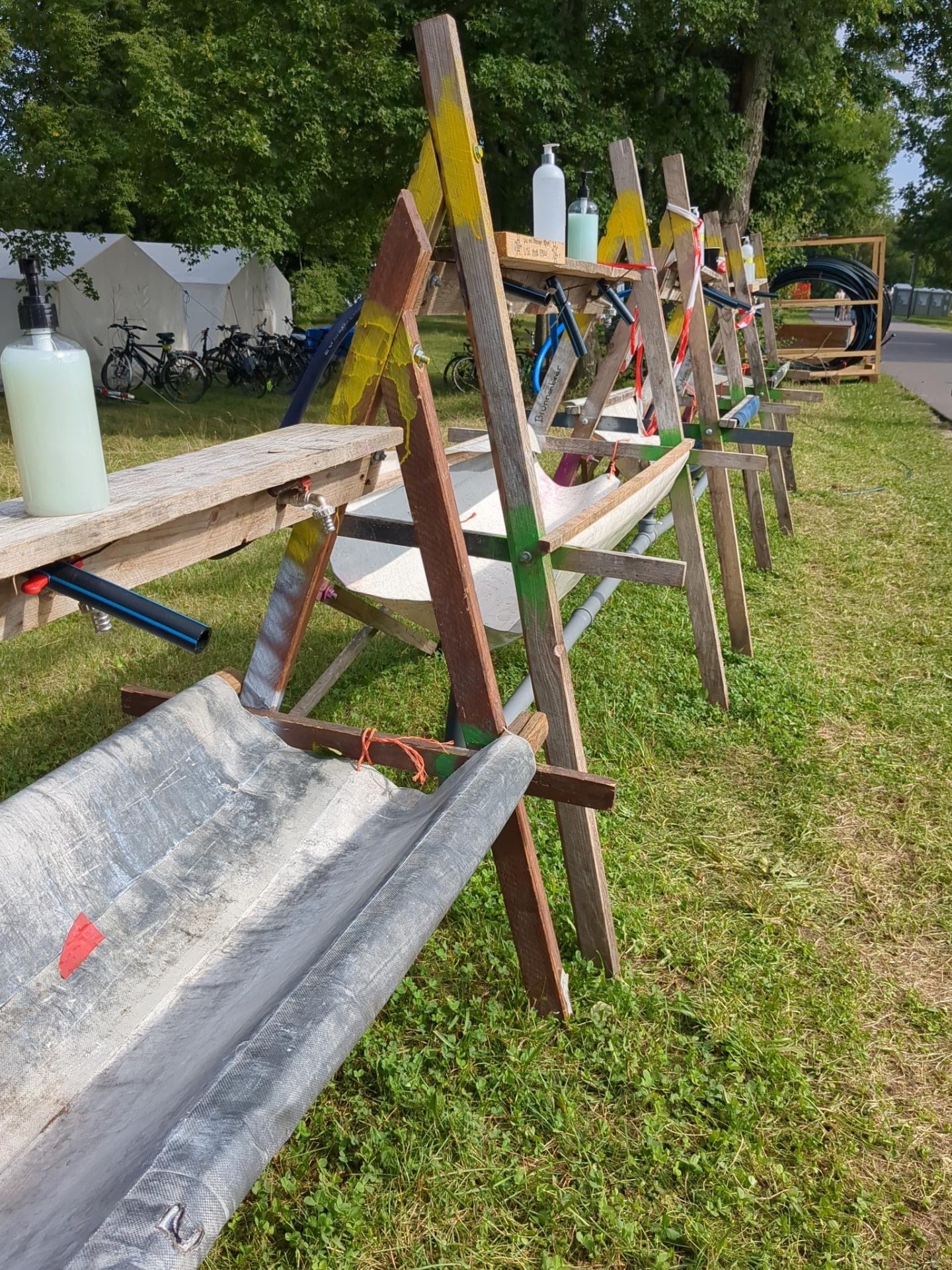
Washbasin
When using the washbasin, remember to open the taps with your elbows if you can. This will ensure that your dirty hands after using the toilet do not contaminate the tap.
Disinfect your hands as often as you can.
They must be dry for that. You will find hand sanitizer dispensers all over the camp.
Also remember to wash your hands with soap, especially before eating and after using the toilet.
There are always washbasins for washing your hands near the toilets.
Please open the taps with your elbows
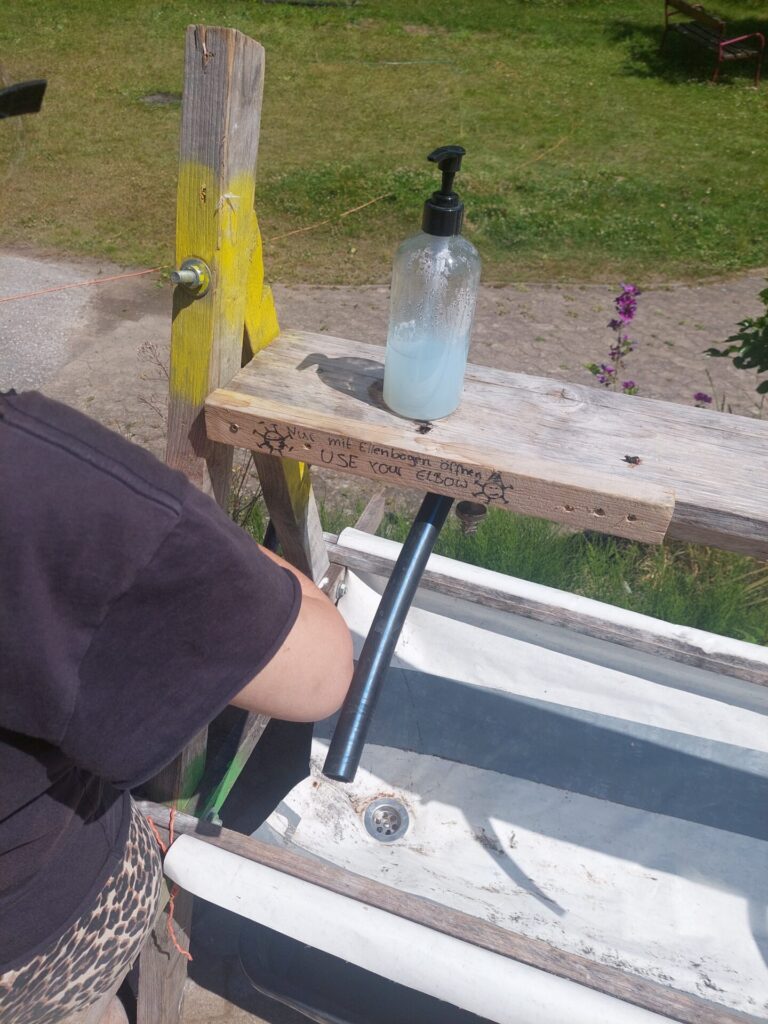
Toilets:
Attention - there are two types: Places2Pee and Places2Shit
There are toilets in several places on the camp, all of which are for all gender identities.
Some of the toilets are for peeing (the Places2Pee), the other part of the toilets are for pooping. We separate them so that the porta-potties don’t have to be emptied so often. All toilets are equipped with a small waste garbage can, menstrual products and toilet paper.
The Places2Pee are squat urinals where you squat (or stand) to pee on a grate and the urine is then drained via a channel. The P2P can be reached via a step. Some squat urinals are equipped with taps so that you can wash out your menstrual cup.
Most of the poo toilets will be porta-potties. The porta-potties will be cleaned regularly (3 times a day).
There will also be some composting toilets. These dry separation toilets can be reached via one or two steps. The solids are collected separately from the liquids in canisters and emptied regularly by the shit brigade.
There is a wheelchair-accessible washroom (easily recognizable by the red tarps all around). It has a shower and a toilet that can be reached without steps. This washroom is designed as a low-barrier washing and toilet area. Decide for yourself whether you want to use this place – and if not, be aware that you cannot necessarily tell whether a person is affected by barriers, do not comment on this.
Some of the toilets are intended for peeing (the Places2Pee)
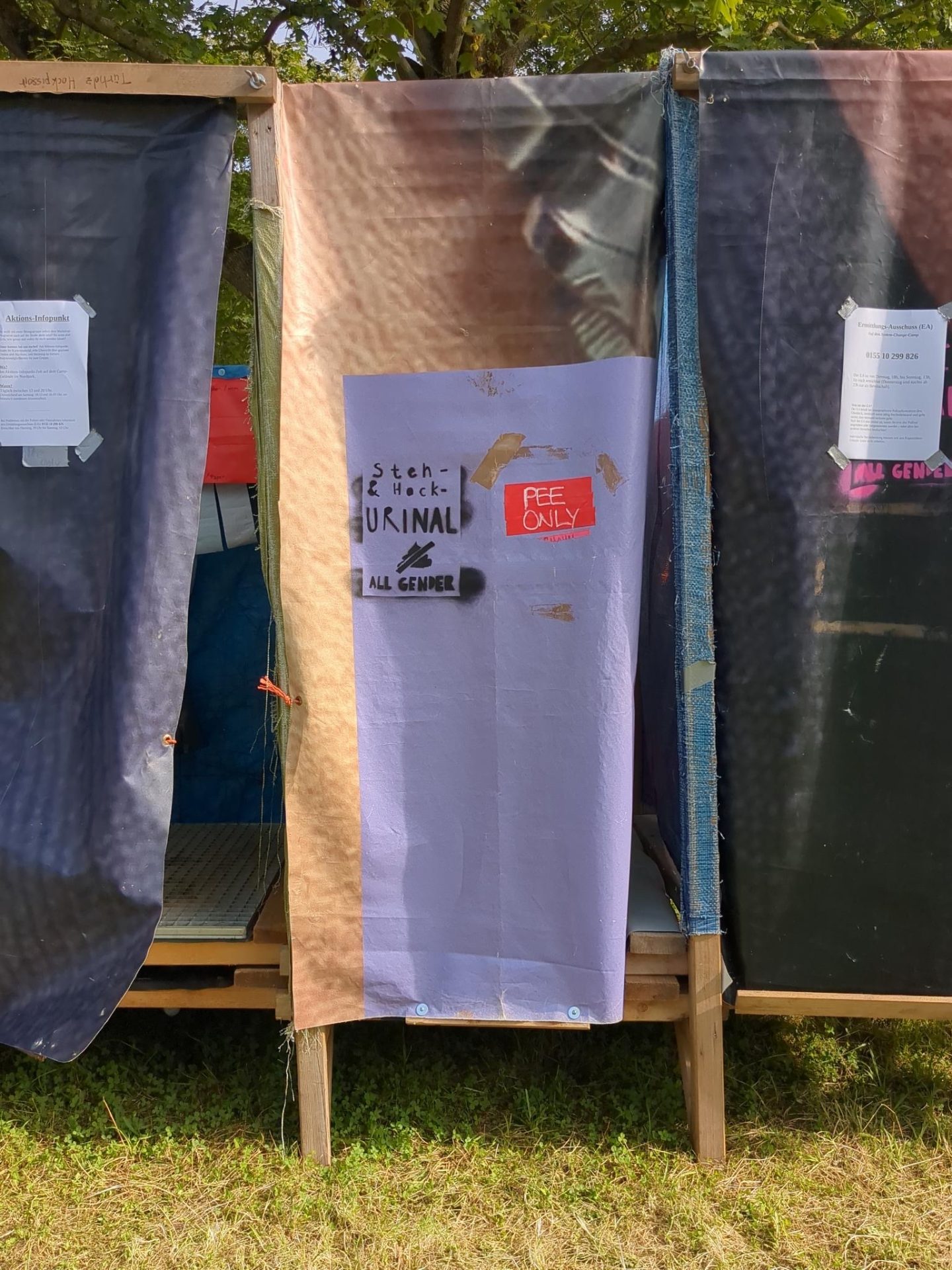
The porta-potties for pooping
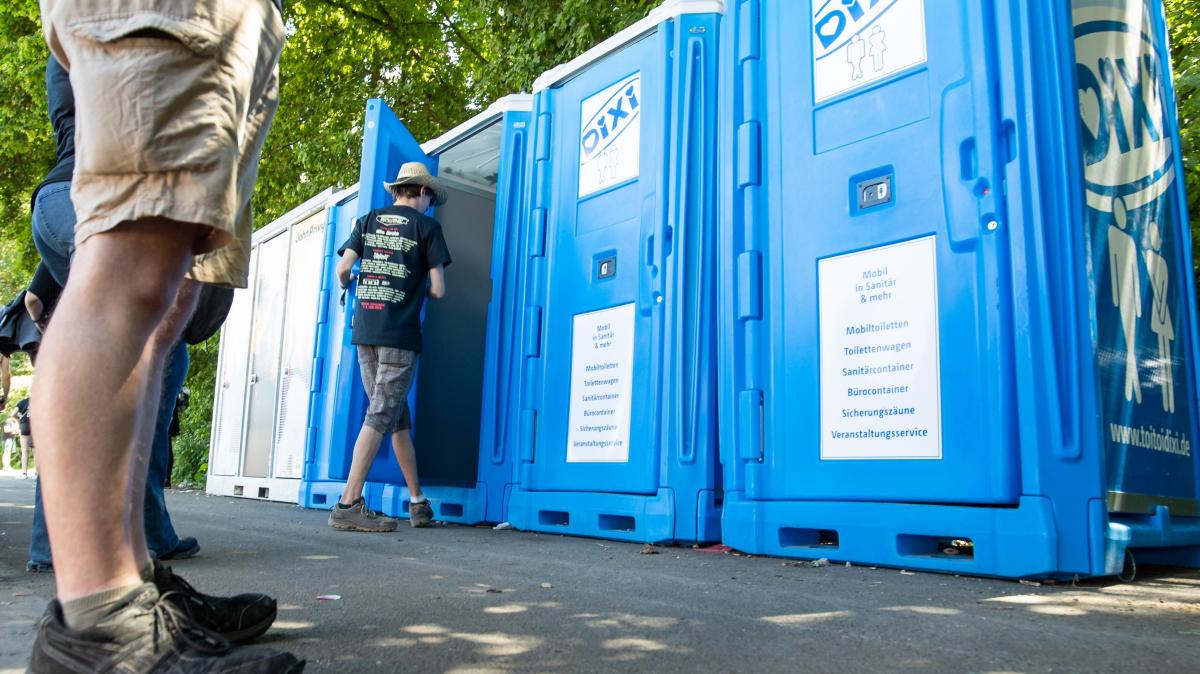
Hygiene
In order to keep the toilets in a hygienic condition and minimize the risk of infection, there is the Shitbrigade (-> you can also join in, information can be found here). The Shitbrigade cleans the toilets three times a day, refills the toilet paper and menstrual articles and empties the pee and poop canisters in the composting toilets.
In addition, measures are taken against diarrhea – in the toilets you will find signs that say “Durchfall Toilette” (diarrhea toilet) – if you have real diarrhea, hang this sign on the outside of the door of the toilet in question. After that, please only use toilets marked in this way. If you don’t have diarrhea, avoid the marked toilets.
Disinfect your hands as often as you can. They must be dry. You will find disinfectant dispensers all over the camp.
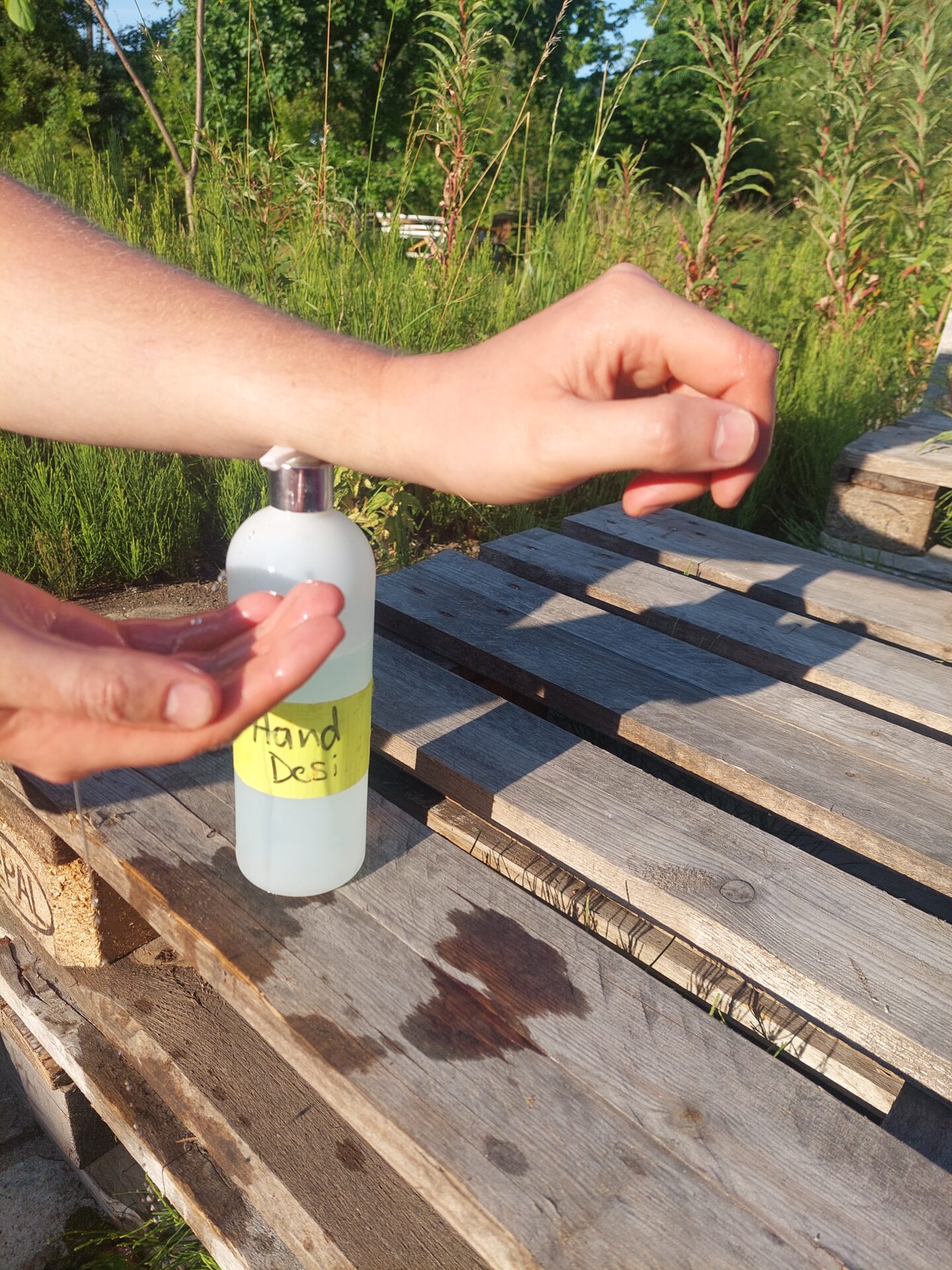
Diarrhea
We are writing this down here because experience shows that people quickly become nervous due to the diarrhea signs and rumor mills at the camps described above. Not every consistency is the same as dangerous diarrhea and leads to infections. Please only put up the signs if you have real diarrhea.
How can I tell if I have diarrhea?
Diarrhea is characterized by unusually frequent and liquid stools. In medical terms, diarrhea means that a person passes mushy to liquid stool more than three times a day (see image types 6 and 7), with the amount of stool exceeding 250 grams per day.
This is usually accompanied by other symptoms such as abdominal pain and cramps, nausea and dehydration. More information on diarrhea here.
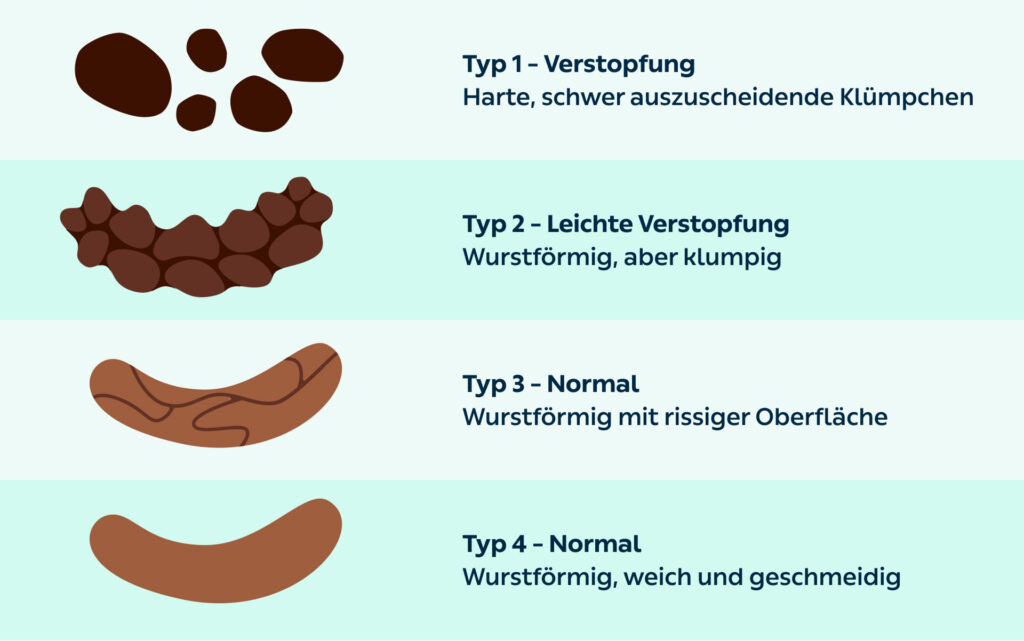
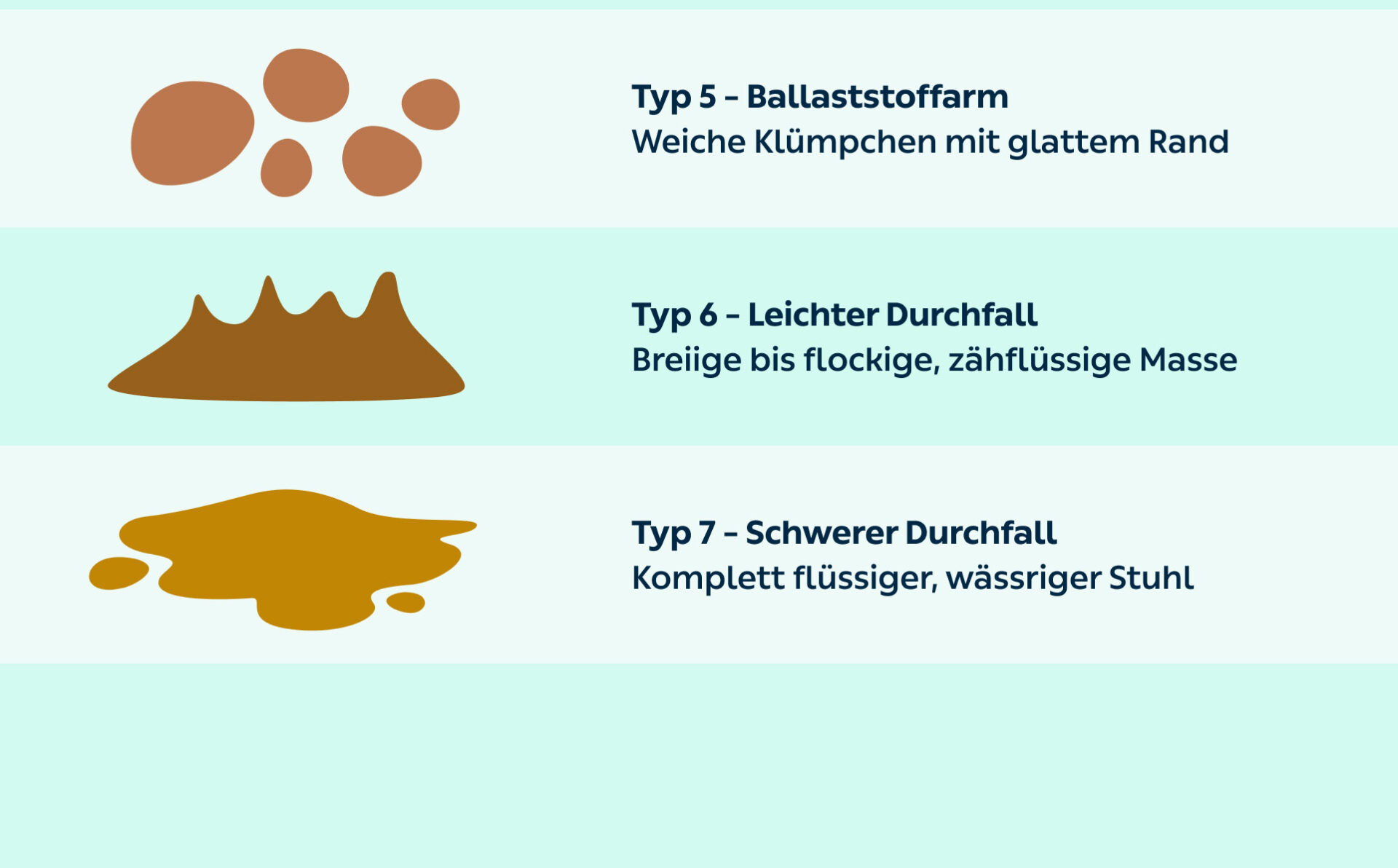
Showers/ washing facilities
There are a small number of showers on the camp – these are located in the marked cabins and are based on the construction concept of the Pee cabins.
The red washroom is available as a low-barrier washing facility.
People can also freshen up at the washbasins.
Ground-level red washroom with toilet
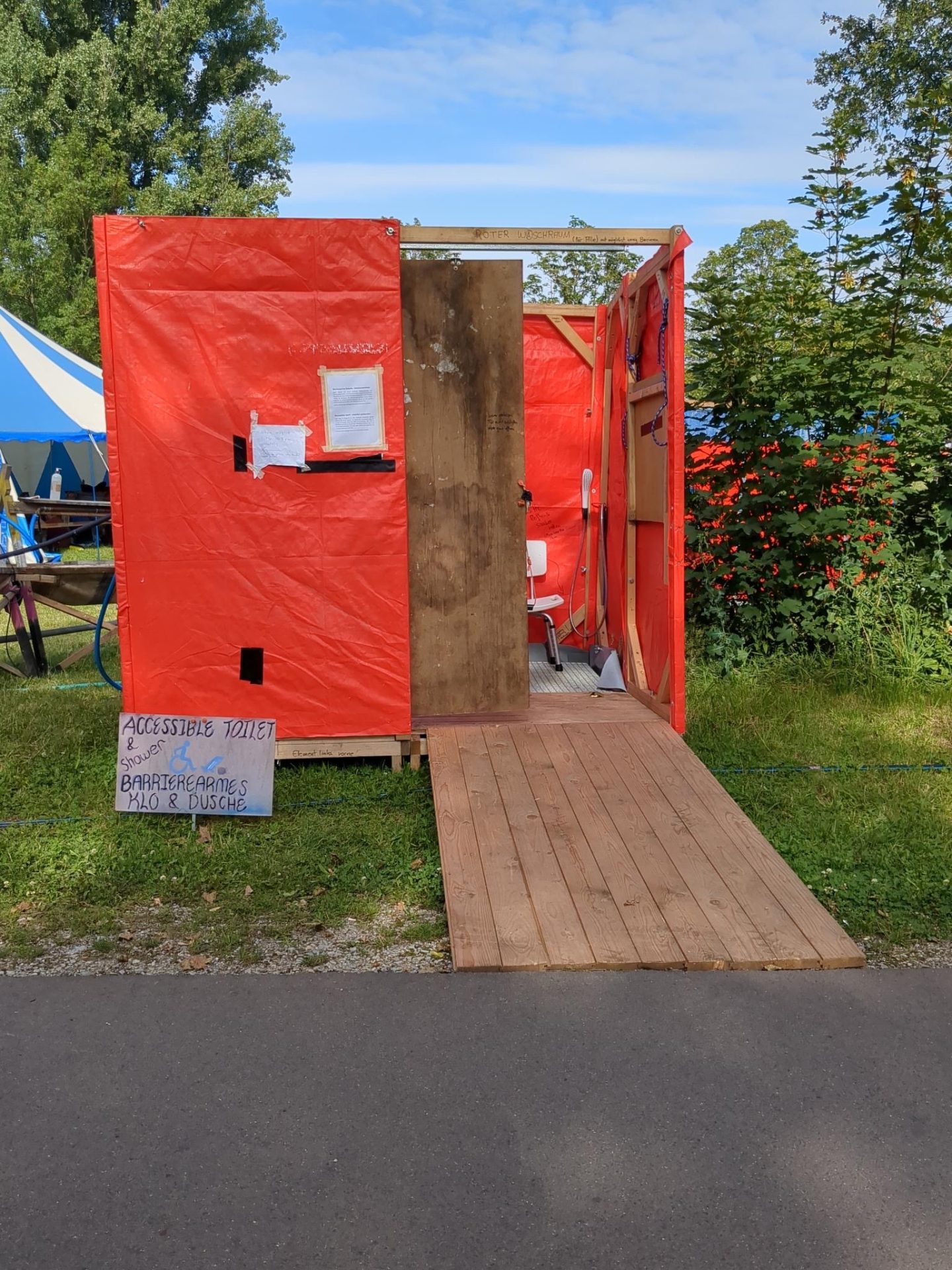
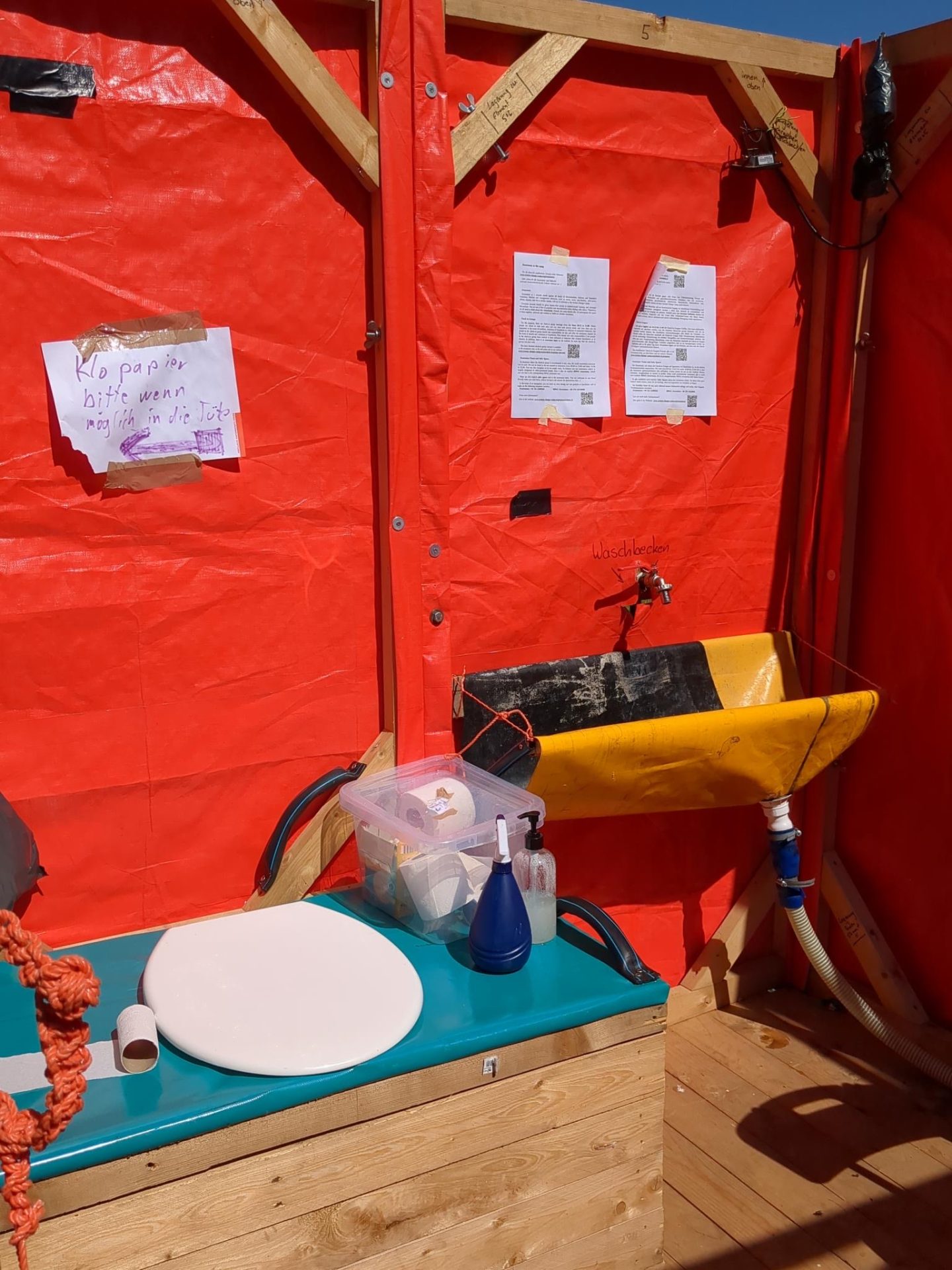
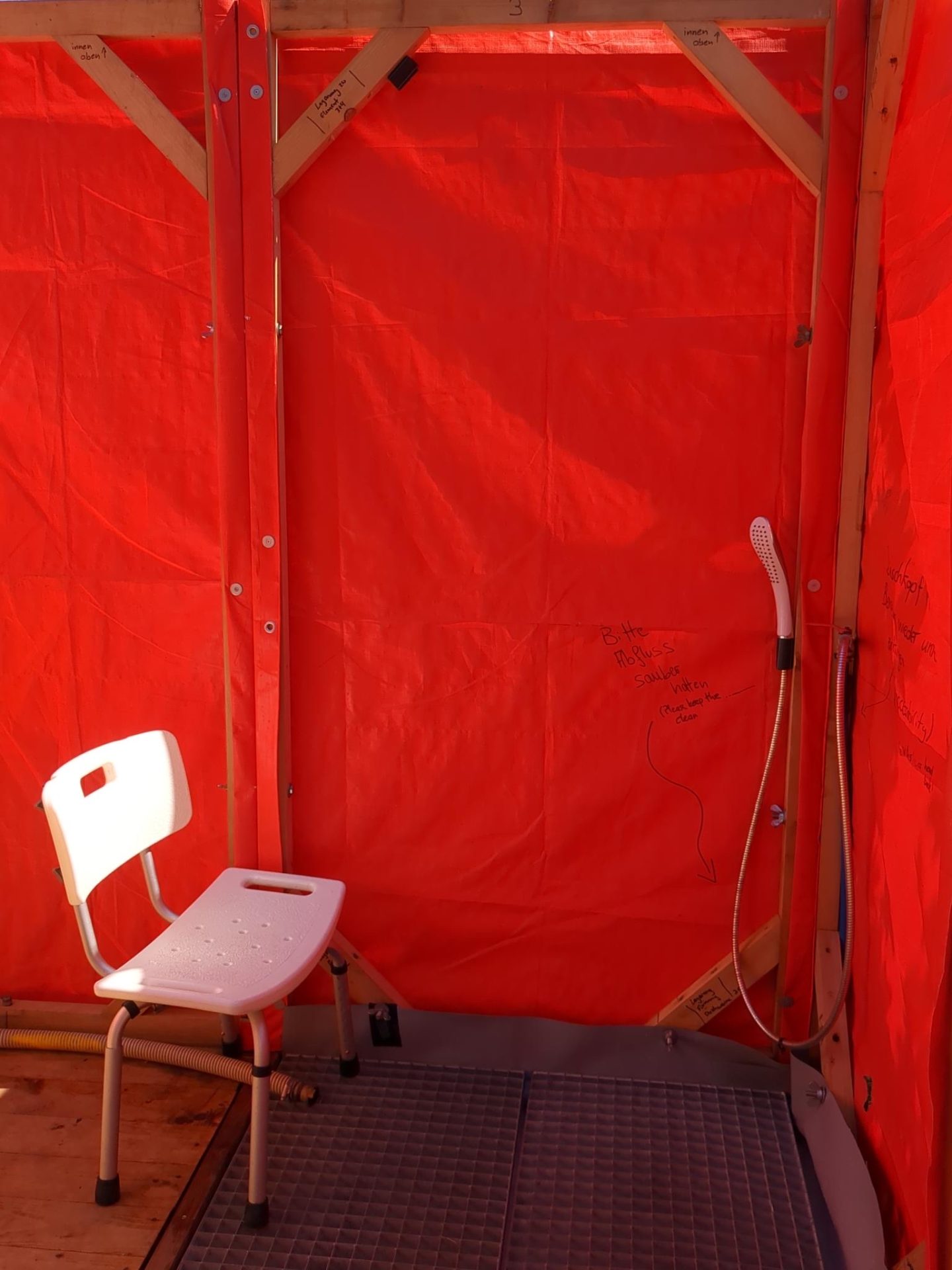
Accessibility information
sWe are trying to break down the barriers around water and shit as best we can.
We would like to give you the following information so that you can assess how you want to deal with them.
All toilets are not designed to reduce barriers to hearing, sight and smell.
Cleanliness of the toilets:
All toilets are cleaned and disinfected 3 times a day (unfortunately we don’t yet have any statistics on how many toilet visits per cleaning cycle this corresponds to and we can’t yet compare this with an average shared flat – but we’re working on it 😀 )
Menstrual products are replenished during the cleaning rounds.
There is an option to dispose of small amounts of waste in all toilets. The regular toilets and a separate washbasin are available for emptying potties. Diapers can be disposed of in a designated waste garbage can.
Distances: We do not yet know exactly how the area will be set up and what the distances will be. Washbasins always need a drain into the sewer system, which is why the positioning of toilets is restricted. We are trying to plan the distances to the nearest toilet as short as possible.
Each toilet station is equipped with at least one low-barrier toilet.
Accessibility information on the various toilets
Compost toilets
Two steps, lighting not guaranteed, wooden doors (locking mechanism may be a little complicated, no contrasts), air circulation through wood as material
Porta-potties
at ground level, very narrow, lighting not guaranteed, simple locking mechanism, hardly any air circulation due to plastic material
Low-barrier porta-potties
at ground level, lighting, simple locking mechanism, hardly any air circulation due to plastic material
Place2Pee / Pee cabins
One step, currently no handles inside to support squatting, air circulation available, no roof, some cubicles are equipped with a water connection for rinsing menstrual cups, some others are marked as showers
Red washroom / red toilet
Accessible via ramp, indoor area larger than 1.5 m x 1.5 m, ground-level shower facilities, changing table, toilet, washbasin available, no roof, contrast rather poor, space to go to the toilet together with children
